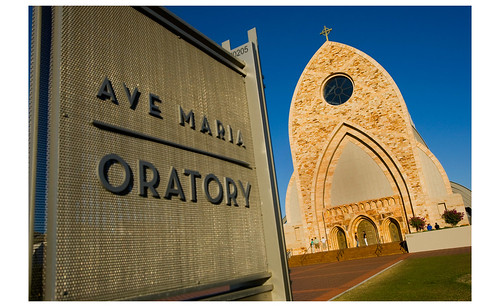The following is a book review for the Catholic Company. They didn't ask me to be positive or negative, but they did give me the book. It is an honest opinion. [/disclosure]
Why He is a Saint—The Life and Faith of Pope John Paul II and the Case for Canonization.
 On May 1, 2011, Pope Benedict will beatify the Venerable Pope John Paul II, conferring on him the title “Blessed,” thus bringing him one step closer to sainthood. (Beatification, which requires a miracle attributed to the blessed’s intercession, allows his local church to venerate him, whereas canonization requires two attested miracles and allows veneration of the saint by the universal Church.) How Pope John Paul II got this far in the process is memorably recounted in Msgr. Slawomir Oder’s new book, “Why He Is A Saint—The Life and Faith of Pope John Paul II and the Case for Canonization.” The Congregation for the Causes of the Saints appointed Msgr. Oder to gather evidence in furtherance of John Paul’s cause for beatification. He wrote Why He Is A Saint after finishing his task. Divided into three chapters—The Man, The Pope, and The Mystic—the 189-page book recounts John Paul’s life, accomplishments, and sanctity through the eyewitness accounts of those who knew him.
On May 1, 2011, Pope Benedict will beatify the Venerable Pope John Paul II, conferring on him the title “Blessed,” thus bringing him one step closer to sainthood. (Beatification, which requires a miracle attributed to the blessed’s intercession, allows his local church to venerate him, whereas canonization requires two attested miracles and allows veneration of the saint by the universal Church.) How Pope John Paul II got this far in the process is memorably recounted in Msgr. Slawomir Oder’s new book, “Why He Is A Saint—The Life and Faith of Pope John Paul II and the Case for Canonization.” The Congregation for the Causes of the Saints appointed Msgr. Oder to gather evidence in furtherance of John Paul’s cause for beatification. He wrote Why He Is A Saint after finishing his task. Divided into three chapters—The Man, The Pope, and The Mystic—the 189-page book recounts John Paul’s life, accomplishments, and sanctity through the eyewitness accounts of those who knew him.
We learn, for instance, how as a young seminarian in Nazi-occupied Poland, Karol Wojtyla, as John Paul was known then, worked at a chemical plan to avoid deportation while continuing his studies in secret. During this period, a fellow seminarian was struck, above all, by Wojtyla’s “kindness, his benevolence, and his sense of comradeship.” In 1946, Wojtyla was ordained and celebrated his first Mass in Wawel Cathedral in Crakow. By becoming a priest, he realized God’s calling in his life: “Nothing,” John Paul later said, “means more to me or gives me greater joy than to celebrate Mass each day and to serve God’s people in the Church. That has been true since the day of my ordination as priest. Nothing has ever changed this, not even becoming pope.” As a priest, Wojtyla’s parishioners were deeply impressed by his extraordinary devotion to the Eucharist, as manifested by his long sessions adoring the Most Blessed Sacrament. Msgr. Oder writes that
[i]t was not uncommon for Wojtyla to spend part of the night in prayer before the altar, stretched out on the floor, his arms spread in the sign of the cross. As one eyewitness put it, “The presence of Christ in the tabernacle allowed him to have a very personal relationship with him: not merely to speak to Christ, but actually converse with him.” After observing the behavior of the young chaplain for a time, his housekeeper prophesied: “You will become a bishop.”
Of course, he did. And the author shares an shrewd assessment of Bishop Wojtyla—offered by his enemies. In a secret communiqué opposing Wojtyla’s candidacy for archbishop of Cracow, the Polish Secret Police wrote:
Since he is a particularly gifted person with a great talent for organization, he is the only bishop who would be able not only to consolidate the members of the curia and the diocesan clergy but also to attract a substantial portion of the intelligentsia and the young Catholics, among whom he enjoys considerable respect . . . he is an especially dangerous ideological adversary.
Wojtyla was indeed a “dangerous ideological adversary” of communism. As bishop, archbishop, cardinal, and pope he played a critical role—perhaps the most important role—in the downfall of communism in Europe. But it is John Paul’s deep prayer life that makes the biggest impression in Why He Is A Saint. Recalled a witness,
I am convinced that John Paul was favored by a special grace of prayer, which allowed him to penetrate the mysteries of faith in a way that was not accessible to ordinary people. So many times I saw his face, after contemplation and adoration, visibly changed and happy. During prayer he seemed to be in continual conversation with God, like Moses who spoke with God face to face. During prayer, Wojtyla did not notice anything that happened around him. He seemed to lose all sense of time, to the extent that his secretary at a certain point would have to shake him out of this extraordinary state of concentration because other commitments awaited him.
Msgr. Oder movingly describes this mystic’s last days, when, afflicted with the painful and humiliating effects of Parkinson’s disease, John Paul suffered publicly and bore the cross Christ had given him. “During his last Holy Week, to a cardinal who was urging him not to strain himself excessively, he said, ‘Jesus did not descend from the cross, why should I?’” And as is fitting, it was through John Paul’s intercession that a French nun was miraculously cured of Parkinson’s disease, thus providing the miracle needed for his beatification.
Why He Is A Saint, vividly portrays the life of a saintly man whom we should all strive to imitate—a man who lived his entire life and bore his appointed crosses for Christ. For this reason the book would serve as an excellent Lenten companion and primer on the life of John Paul II—on the eve of his beatification.
So there you have it. Now go get your copy. :0)
This review was written as part of the Catholic book reviewer program from The Catholic Company. Visit The Catholic Company to find more information on
. They are also a great source for
.






 God's grace began to find healing and freedom. In the second part I offer 5 practical strategies, or as I like to call them, 5 smooth stones to take down your Goliath. Give it a listen and pass it on!
God's grace began to find healing and freedom. In the second part I offer 5 practical strategies, or as I like to call them, 5 smooth stones to take down your Goliath. Give it a listen and pass it on!










 Ave Maria University has
Ave Maria University has 





 This blog is dedicated to bringing you free orthodox Catholic audio. If you have a tip or would like to report a broken link, please e-mail me by clicking the link above.
"Faith then cometh by hearing; and hearing by the word of Christ."
Rom 10:17(DRV)
This blog is dedicated to bringing you free orthodox Catholic audio. If you have a tip or would like to report a broken link, please e-mail me by clicking the link above.
"Faith then cometh by hearing; and hearing by the word of Christ."
Rom 10:17(DRV)